Thai Dragon Peppers is an heirloom chili Pepper dating from the 19th century. Thai Dragon Peppers is a popular and versatile ingredient in many cuisines worldwide. Growing Thai Dragon Peppers can be a fun and rewarding experience.
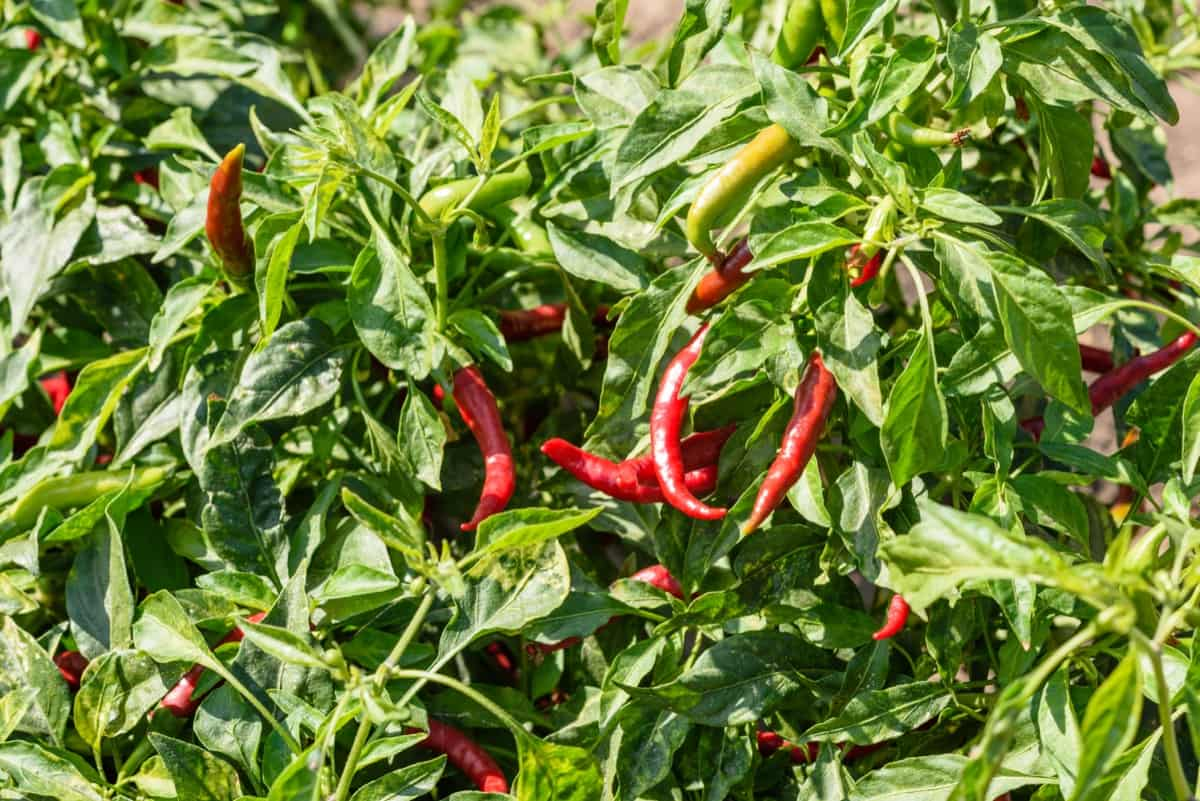
How to Start Thai Dragon Pepper Farming
Soil Requirement for Growing Thai Dragon Peppers
- The quality of soil is an essential factor in growing Thai Dragon Peppers. The ideal soil for these Pepper plants should be rich and well-drained, allowing oxygen to reach the roots easily. Before planting your Pepper seeds, compost the soil to enrich it with nutrients.
- By amending your soil properly, you can provide the ideal nutrient levels your plants require while maintaining the correct pH balance. This will ensure they grow healthy and produce high-quality fruit throughout their lifecycle.
- With proper care, rich, well-draining soils will help you grow healthy plants that’ll reward you with abundant harvests year after year.
How Much Sun Does a Thai Dragon Pepper Plant Need?
- These Peppers need sunlight to thrive and produce healthy, flavorful fruit. When selecting a location for your Thai Dragon Pepper plants, choose an area with full sun exposure. This means at least 6 hours of direct sunlight per day.
- If you’re planting in containers or indoors, ensure they’re placed near a window with plenty of sunlight. You may also consider using grow lights to supplement natural light if necessary. It’s important to note that too much sun can also be harmful. If your plants get too much direct sunlight during the day, they may wilt or dry out.
- To prevent this from happening, try providing some shade during peak hours or moving them to a slightly shadier spot in your garden. Finding the right balance of sunlight is key to growing healthy Thai Dragon Peppers.
In case you missed it: Management of Black Thrips in Chilli Peppers: Symptoms, Treatment, Chemical, Biological, Natural, and Organic Control
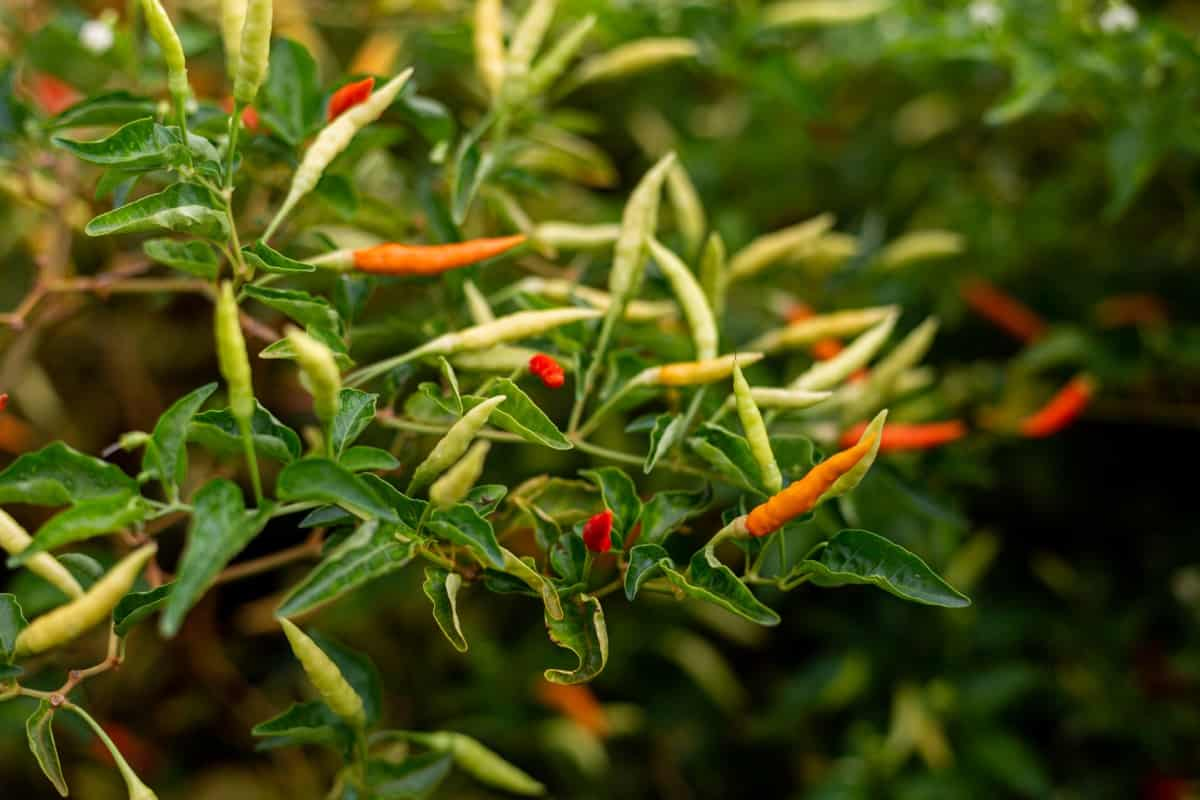
Where to Plant Thai Dragon Peppers?
- Choosing the right location is essential for their growth and development. These Peppers require warm temperatures and plenty of sunlight, so finding a spot that meets these criteria is important.
- One option for planting Thai Dragon Peppers is in containers. This allows you to move them around to ensure they get enough light and warmth throughout the day. Ensure the growing container has drainage holes to prevent water from building up at the roots.
- If you prefer planting directly in the soil, choose an area with well-draining soil with full sun exposure. Avoid areas with heavy clay or rocky soils, which can hinder root development and plant growth.
Tips for Growing Thai Dragon Peppers Successfully
- When choosing your seeds or seedlings, ensure they come from a reputable source. This will help ensure that the plant is disease-free and produces high-quality fruit. You can purchase Thai Dragon Pepper seeds online or at your local nursery. Always test your soil before planting and amend it for optimal nutrient levels.
- Choose pots that allow for adequate drainage and are large enough for the mature size of your plants. The Pepper plant is to ensure that it has rich, well-drained soil.
- Watering is also essential to caring for your Thai Dragon Pepper plant. It’s best to water the plant in the morning or early afternoon to evaporate any excess moisture before nightfall. Water regularly, but avoid over-watering as this can lead to root rot.
- Regularly fertilizing your Thai Dragon Pepper plant will help it thrive and produce more Peppers. A balanced fertilizer with equal amounts of NPK is ideal for these plants.
- Pruning is important when growing Thai Dragon Peppers in pots as they grow bushier than when planted directly into the ground. Pinch off any new growth between the two branches to encourage more branching and fruit production. Another way to care for your Pepper plant is by pruning it regularly to promote bushier growth and better air circulation around the leaves and fruit.
- Watch for plant pests such as aphids or spider mites that may try to attack your plants. Organic pest control methods like neem oil can help keep them at bay while keeping your Peppers safe from harmful chemicals.
Steps to Grow Thai Dragon Peppers Indoors
- Plant the seeds indoors 8 to 10 weeks before your last frost date. Plant the Pepper seeds no deeper than a quarter of an inch into well-drained soil with a pH level between 6.2 to 7.0.
- Once seedlings have sprouted, please put them in pots or transplant them outside once all threats of frost have passed. Keep plants in full sunlight for part of the day, watering regularly but not over-watering, as this can lead to rotting roots.
- Fertilize the plant every few weeks using a balanced fertilizer, paying attention to any nutrient deficiencies that may appear on leaves, such as yellowing or stunted growth.
- Monitoring pests such as aphids or spider mites is important, which can harm your Pepper plant’s growth and yield. Use organic pest control methods if possible.
- Harvest when Peppers turn bright red and cut from branches leaving small nubs of stems intact on fruit like you would on pumpkins.
In case you missed it: How this Farmer Earning 35 Lakhs from His Capsicum Farm: A Success Story of a Bell Pepper Polyhouse Farmer in India
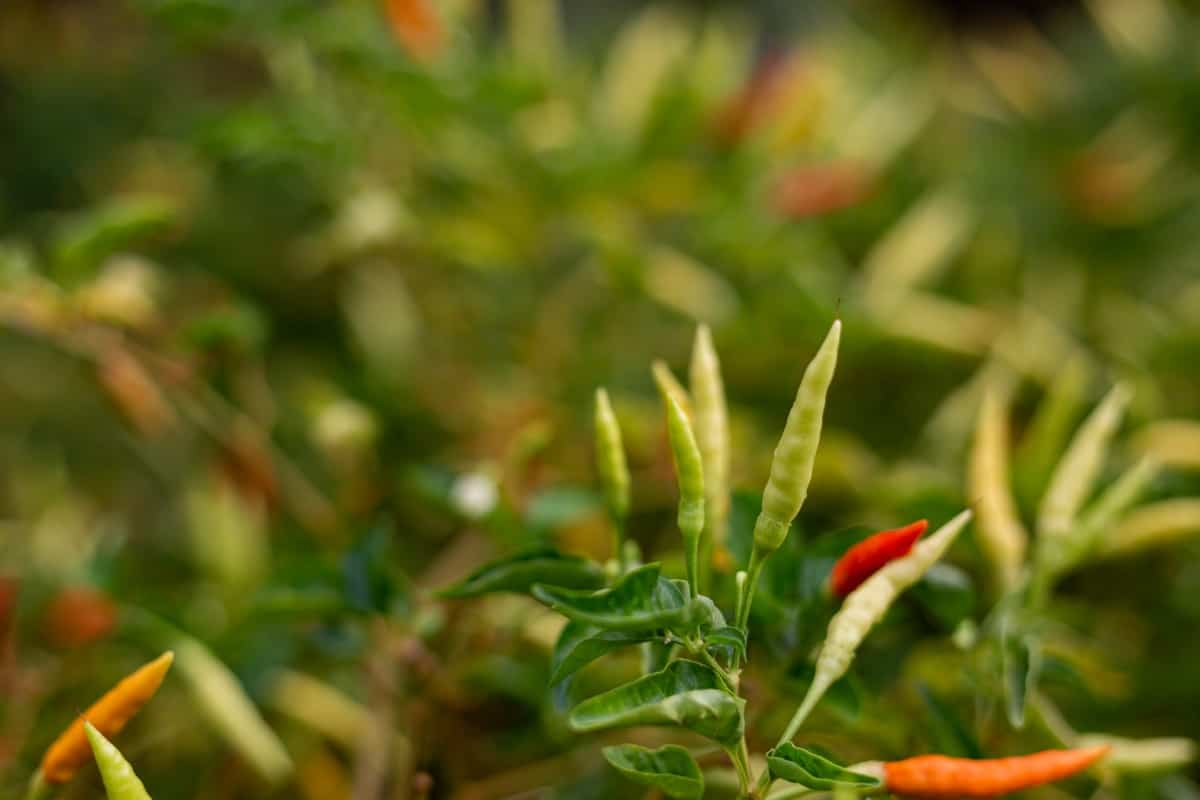
Tips for Planting the Thai Dragon Pepper Seeds
- You’ll need to plant the seeds to start growing Thai Dragon Peppers. You can purchase them from a garden center or online. Before planting, ensure a good seed starting mix and clean containers with proper drainage holes.
- Start by filling your container with the soil mix and moisten it lightly. Then press one to two seeds about ¼ inch deep into each pot of soil. Cover the Pepper seeds with another thin layer of soil mix.
- Once planted, cover your pots with plastic wrap or a humidity dome to help retain moisture until germination occurs. Place the pots where they will receive sufficient light and warmth for successful growth.
- Germination usually happens within 2 to 6 weeks, but cool soil temperatures can delay this process. To ensure successful germination, keep the soil moist but not soaking wet.
- In about two weeks, you should see sprouts begin to emerge from the soil surface. Once this happens, remove any covers or wraps on top of your pots and move them towards more direct sunlight while consistently watering daily or as needed depending on how fast they dry out.
Fertilize and Water Regularly to Keep Thai Dragon Peppers Healthy
- Fertilize them regularly with a balanced fertilizer high in phosphorus and potassium. Avoid using too much nitrogen in the Pepper plant, as this can stimulate leafy growth at the expense of fruiting. Remove dead leaves or branches from your Pepper plant regularly and provide support if needed so they don’t bend under their weight once they start producing fruits.
- These plants require regular fertilization to thrive and produce a bountiful crop. Choosing one that is high in potassium and phosphorus but low in nitrogen is important. Too much nitrogen levels can lead to excessive foliage growth.
- A slow-release fertilizer applied every 4-6 weeks will help ensure your Peppers receive adequate nutrients throughout their growing season. You can also supplement with organic options such as compost or fish emulsion. In addition to fertilizing, proper watering is crucial for healthy plant growth. Thai Dragon Peppers prefer moist soil but not waterlogged roots, so aim for consistent moisture without overwatering.
- During hotter months, you may need to increase the watering frequency or consider using a drip irrigation system. Always water deeply at the base of the plant rather than spraying from above, which can encourage disease development.
- While keeping your plant hydrated is essential, overwatering can harm its growth. The general rule is to water your Thai Dragon Pepper plants when the top inch of soil feels dry. Ensure you don’t splash water on the leaves, as this can lead to disease and fungal growth. Providing consistent moisture without drowning your plants will help ensure healthy growth and a bountiful harvest of spicy Thai Dragon Peppers.
In case you missed it: How to Start Bell Pepper Farming in the USA: Production, and A Step-by-Step Growing Guide for Beginners
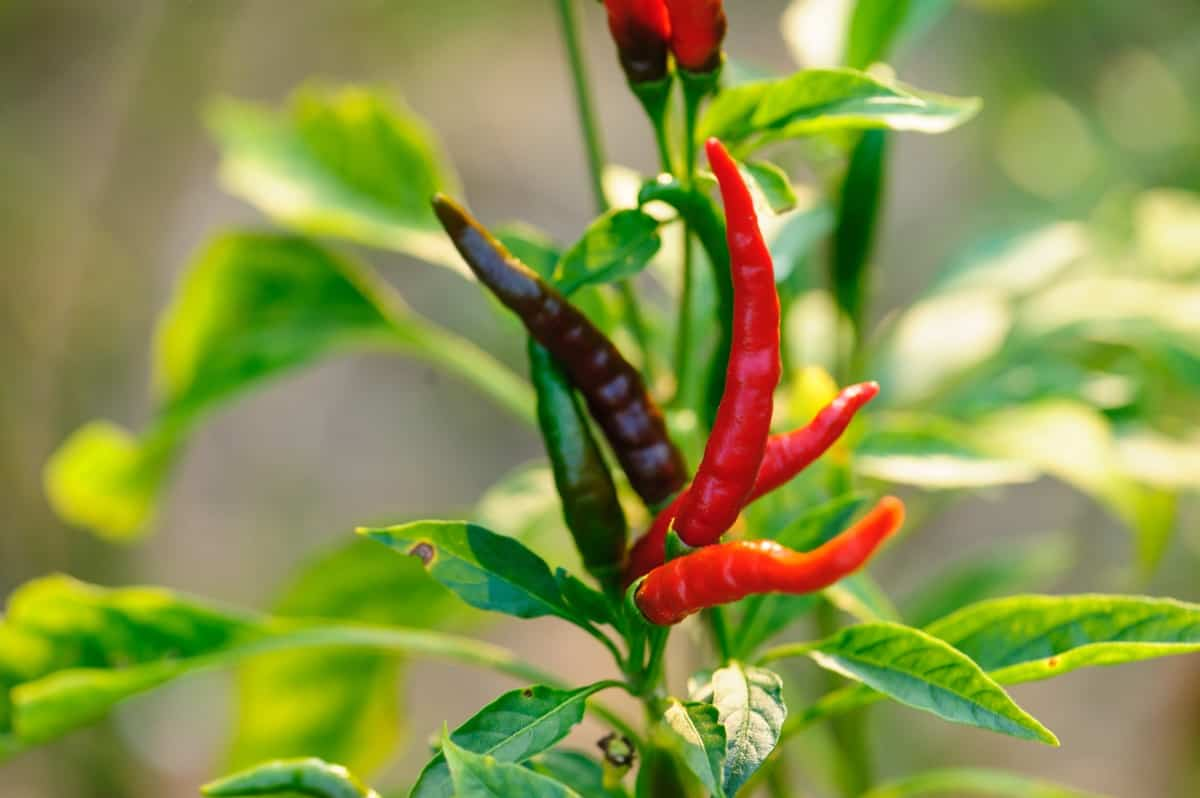
Problems When Growing Thai Dragon Peppers
- Yellow Leaves: If you notice yellowing leaves, it could be a sign of overwatering or underwatering. Ensure to water your plants consistently, but not too much, as this may lead to root rot.
- Pests: Common pests that can damage Thai Dragon Pepper plants include aphids and spider mites. Use insecticidal soap or neem oil spray regularly to keep these pests at bay.
- No Flowers/Fruit: Lack of flowers or fruit could be due to insufficient light or nutrients. Ensure your plant receives enough sunlight and use a fertilizer every few weeks during the growing season.
- Wilting Plants: Wilting can occur due to under-watering, overwatering, or pest infestation. Check for signs of insects and adjust your watering schedule accordingly.
Conditions To Promote Healthy Growth in Thai Dragon Peppers
- Choose the right location: Thai Dragon Peppers need plenty of sunlight, so choose a sunny spot for your plant. The plants prefer well-drained soil that is rich in nutrients.
- Provide support: As your Pepper plant grows taller, it may need some support to prevent it from falling over due to heavy fruit production or strong winds.
- Prune when necessary: Pruning helps promote new growth and keeps the plant healthy by removing dead or damaged branches.
- Use organic fertilizer: Organic fertilizers like compost or worm castings provide essential nutrients without harsh chemicals that could damage your plants.
Why Is My Thai Dragon Pepper Plant Not Growing?
- Check the soil quality for growing healthy plants. If the soil is too compact and doesn’t allow for good drainage, it can stunt your plant’s growth. Make sure to add organic matter to improve soil quality.
- Another factor that may be causing stunted growth is insufficient sunlight. Thai Dragon Peppers require full sun exposure to thrive, so ensure they get at least six hours of direct sunlight daily.
- Over-watering or under-watering could also be an issue. Water your plants regularly but don’t overdo it, as this can cause root damage and slow growth.
- Pests and diseases such as aphids or fungal infections may affect your plant’s ability to grow properly. Regularly inspect your Pepper plants for any signs of infestation or disease and take appropriate measures.
In case you missed it: Organic Capsicum Farming – Bell Pepper Cultivation
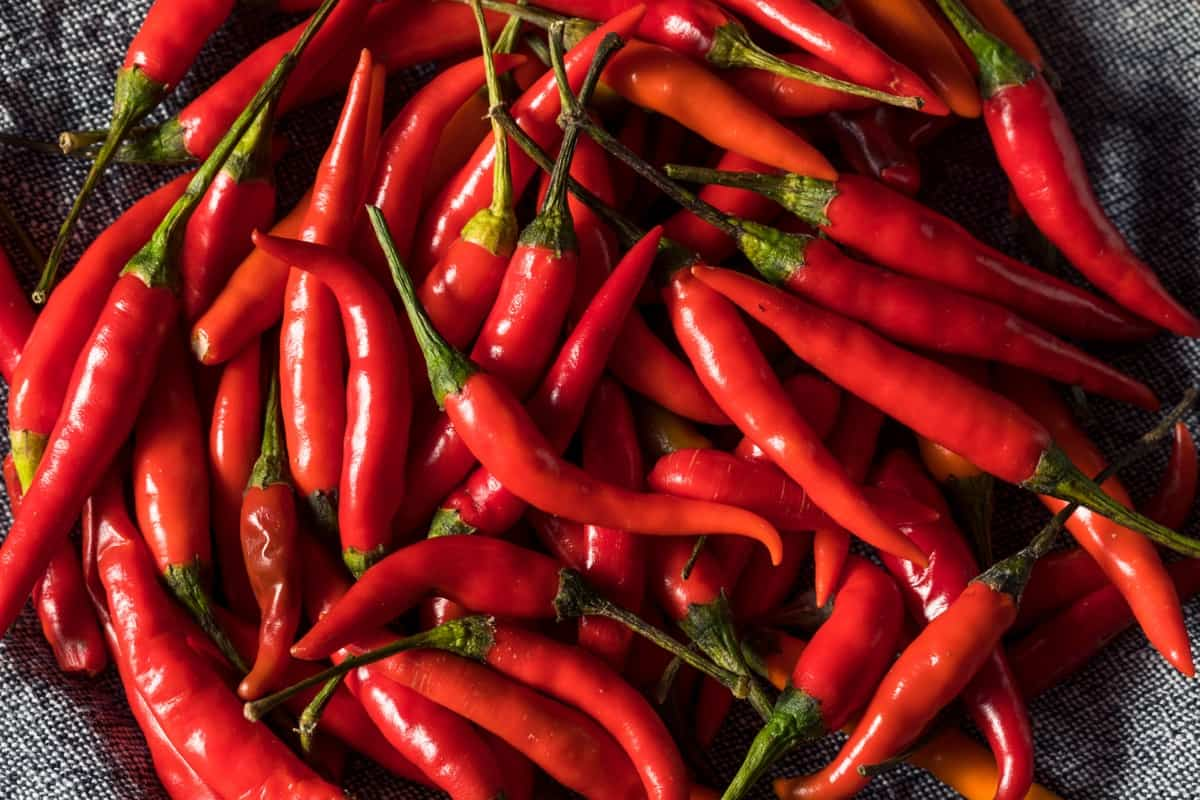
Pests and Diseases Control for Thai Dragon Pepper Plant Growth
- The most common pests that attack Pepper plants include aphids, spider mites, and whiteflies. Aphids are small insects in plants that suck sap and cause the yellowing of leaves. Spider mites feed on leaves and create webbing, while whiteflies feed on the underside of leaves.
- You can use a neem oil spray to control these pests. It’s important to watch for symptoms of infestation so that it can be controlled before it spreads too much.
- Other problems you may encounter with your Thai Dragon Peppers include blossom end rot caused by a calcium deficiency in the soil. To prevent this issue, ensure adequate calcium levels in the soil through fertilization.
When and How to Harvest Thai Dragon Peppers?
- The first sign that your Peppers are ready is their color. They’re ripe and ready for picking when they turn a bright red. Always use pruners or a sharp knife to cut the Pepper from the branch, leaving a small nub of stem intact on the fruit like you would on a pumpkin.
- Be careful not to damage any other parts of the plant while harvesting, as this could cause disease or affect future yields. If you accidentally damage any part of the plant, immediately remove it so it doesn’t lead to further infections.
- When it’s time to harvest, always use pruners or a sharp knife and cut from the branch leaving a small stem nub intact on each fruit. This will help prevent rotting and extend their shelf life.
- After harvesting, wash your Peppers thoroughly with cool water and allow them to dry before storing them. Thai Dragon Peppers can be stored at room temperature for up to two weeks but last longer in cooler temperatures, such as refrigerators or freezers.
In case you missed it: How to Start Dragon Carrot Farming: A Step-by-Step Growing Guide
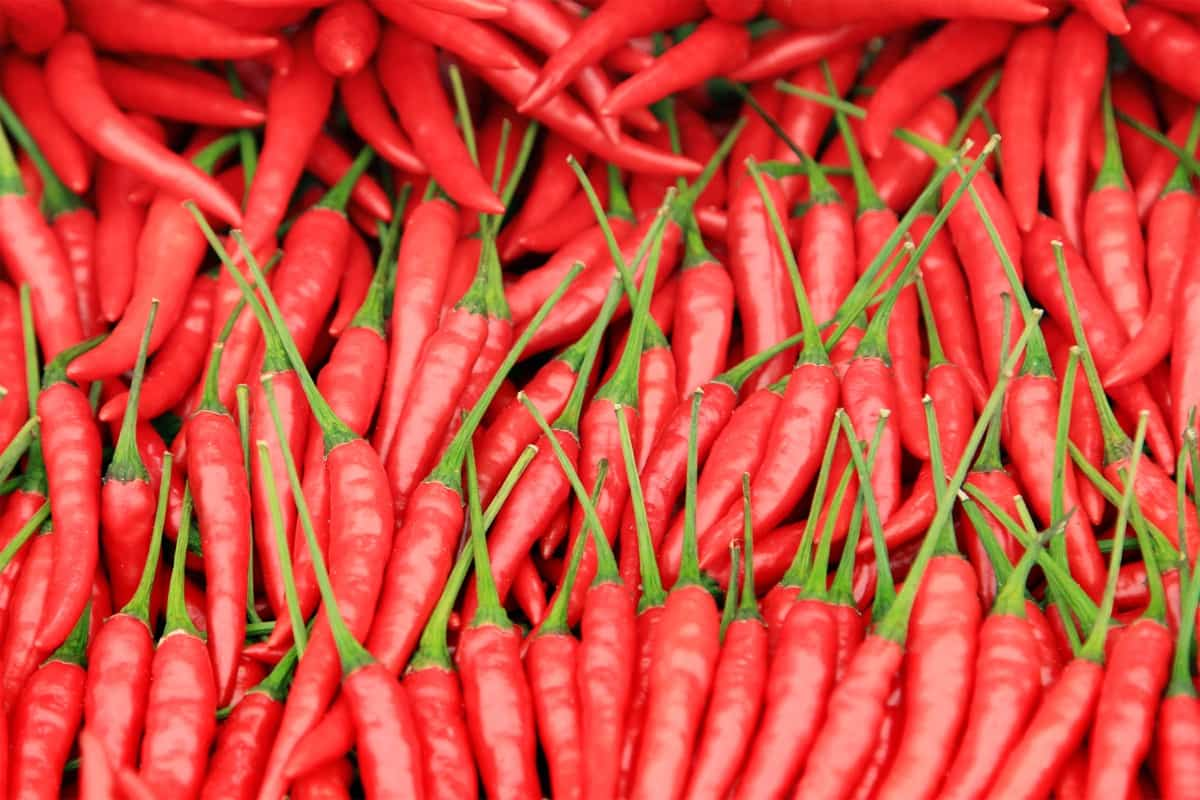
Conclusion
Thai Dragon Peppers are incredibly easy to grow. Growing Thai Dragon Peppers in pots is a great option for those with limited space or who want to grow them indoors. With the right amount of care and attention, you can produce a bountiful crop of these spicy Peppers that will add flavor to your meals.
- Economical Aquaculture: A Guide to Low-Budget Fish Farming
- 15 Common Planting Errors That Can Doom Your Fruit Trees
- How to Make Houseplants Bushy: Effective Tips and Ideas
- Innovative Strategies for Boosting Coconut Pollination and Yield
- Pollination Strategies for Maximum Pumpkin Yield
- The Complete Guide to Chicken Fattening: Strategies for Maximum Growth
- Natural Solutions for Tulip Problems: 100% Effective Remedies for Leaf and Bulb-Related Issues
- Revolutionizing Citrus Preservation: Towards a Healthier, Greener Future
- Natural Solutions for Peony Leaf and Flower Problems: 100% Effective Remedies
- Maximizing Profits with Avocado Contract Farming in India: A Comprehensive Guide
- Natural Solutions for Hydrangea Problems: 100% Effective Remedies for Leaf and Flowers
- The Ultimate Guide to Choosing the Perfect Foliage Friend: Bringing Life Indoors
- From Sunlight to Sustainability: 15 Ways to Use Solar Technology in Agriculture
- The Ultimate Guide to Dong Tao Chicken: Exploring from History to Raising
- The Eco-Friendly Makeover: How to Convert Your Unused Swimming Pool into a Fish Pond
- Mastering the Art of Delaware Chicken Farming: Essentials for Healthy Backyard Flocks
- 20 Best Homemade Fertilizers for Money Plant: DIY Recipes and Application Methods
- How to Craft a Comprehensive Free-Range Chicken Farming Business Plan
- Brighten Your Flock: Raising Easter Egger Chickens for Beauty and Bounty
- How to Optimize Your Poultry Egg Farm Business Plan with These Strategies
- Subsidy for Spirulina Cultivation: How Indian Government Schemes Encouraging Spirulina Farmers
- Ultimate Guide to Raising Dominique Chickens: Breeding, Feeding, Egg-Production, and Care
- Mastering the Art of Raising Jersey Giant Chickens: Care, Feeding, and More
- Ultimate Guide to Raising Legbar Chickens: Breeding, Farming Practices, Diet, Egg-Production
- How to Raise Welsummer Chickens: A Comprehensive Guide for Beginners
- How to Protect Indoor Plants in Winter: A Comprehensive Guide
- Ultimate Guide to Grow Bag Gardening: Tips, Tricks, and Planting Ideas for Urban Gardeners
- Guide to Lotus Cultivation: How to Propagate, Plant, Grow, Care, Cost, and Profit
- Agriculture Drone Subsidy Scheme: Government Kisan Subsidy, License, and How to Apply Online
- Ultimate Guide to Raising Araucana Chickens: Breed Profile, Farming Economics, Diet, and Care
- Bringing Hydroponics to Classroom: Importance, Benefits of Learning for School Students
- Ultimate Guide to Raising Polish Chickens: Breed Profile, Farming Economics, Diet, and Care
- Ultimate Guide to Raising Australorp Chickens: Profile, Farming Economics, Egg Production, Diet, and Care
- Silkie Chicken Farming: Raising Practices, Varieties, Egg Production, Diet, and Care
- Sussex Chicken Farming: Raising Practices, Varieties, Egg Production, Diet and Care
- Homemade Feed Formulations for Livestock: Discover Cost-effective Starter to Finisher Feed Recipes